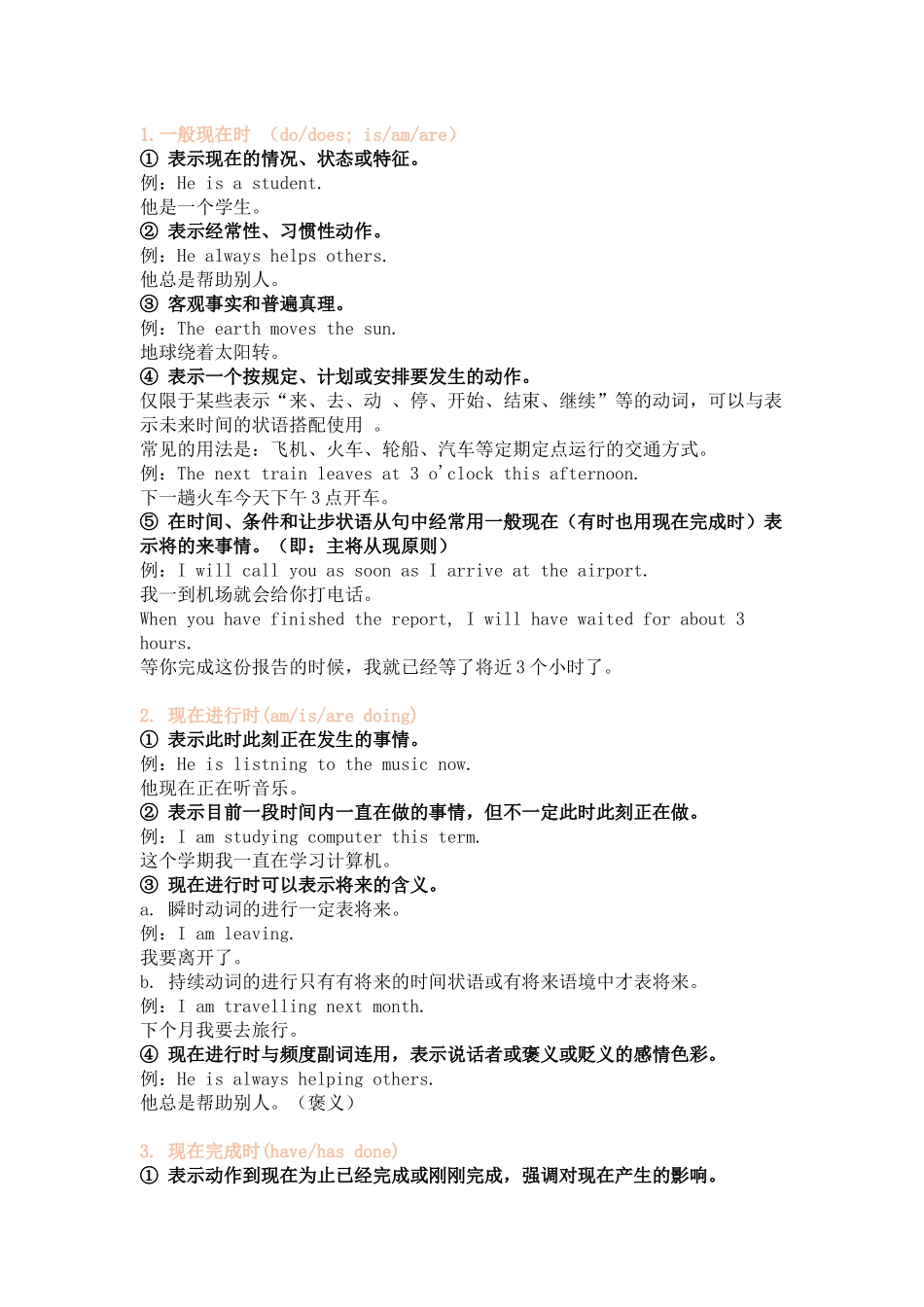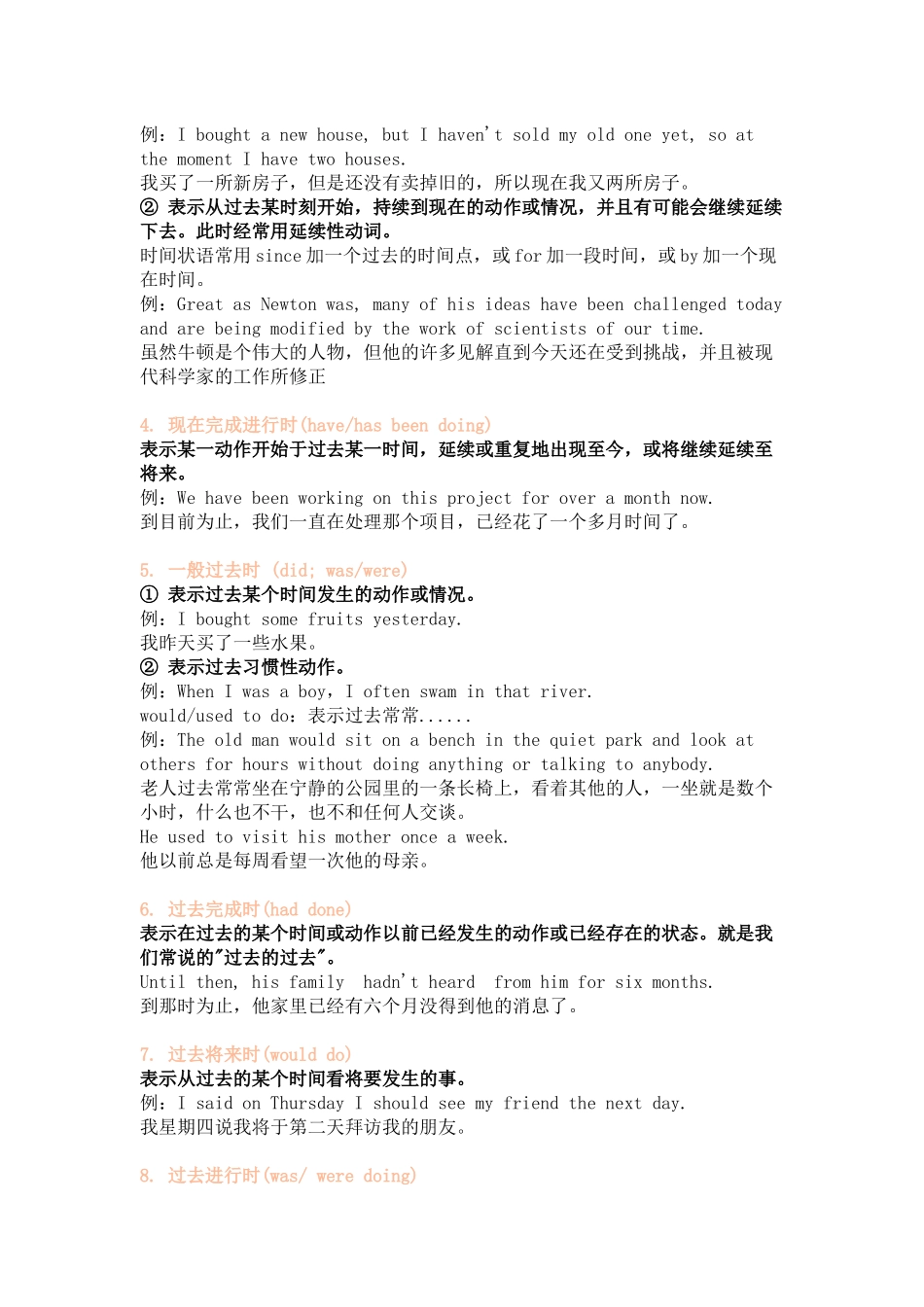1.一般现在时 (do/does; is/am/are)① 表示现在的情况、状态或特征。例:He is a student.他是一个学生。② 表示经常性、习惯性动作。例:He always helps others.他总是帮助别人。③ 客观事实和普遍真理。例:The earth moves the sun.地球绕着太阳转。④ 表示一个按规定、计划或安排要发生的动作。仅限于某些表示“来、去、动 、停、开始、结束、继续”等的动词,可以与表示未来时间的状语搭配使用 。常见的用法是:飞机、火车、轮船、汽车等定期定点运行的交通方式。 例:The next train leaves at 3 o'clock this afternoon.下一趟火车今天下午 3 点开车。⑤ 在时间、条件和让步状语从句中经常用一般现在(有时也用现在完成时)表示将的来事情。(即:主将从现原则)例:I will call you as soon as I arrive at the airport.我一到机场就会给你打电话。When you have finished the report, I will have waited for about 3 hours.等你完成这份报告的时候,我就已经等了将近 3 个小时了。2. 现在进行时(am/is/are doing)① 表示此时此刻正在发生的事情。例:He is listning to the music now.他现在正在听音乐。② 表示目前一段时间内一直在做的事情,但不一定此时此刻正在做。例:I am studying computer this term.这个学期我一直在学习计算机。③ 现在进行时可以表示将来的含义。a. 瞬时动词的进行一定表将来。例:I am leaving.我要离开了。b. 持续动词的进行只有有将来的时间状语或有将来语境中才表将来。例:I am travelling next month.下个月我要去旅行。④ 现在进行时与频度副词连用,表示说话者或褒义或贬义的感情色彩。例:He is always helping others.他总是帮助别人。(褒义)3. 现在完成时(have/has done)① 表示动作到现在为止已经完成或刚刚完成,强调对现在产生的影响。 例:I bought a new house, but I haven't sold my old one yet, so at the moment I have two houses.我买了一所新房子,但是还没有卖掉旧的,所以现在我又两所房子。② 表示从过去某时刻开始,持续到现在的动作或情况,并且有可能会继续延续下去。此时经常用延续性动词。时间状语常用 since 加一个过去的时间点,或 for 加一段时间,或 by 加一个现在时间。 例:Great as Newton was, many of his ideas have been...

